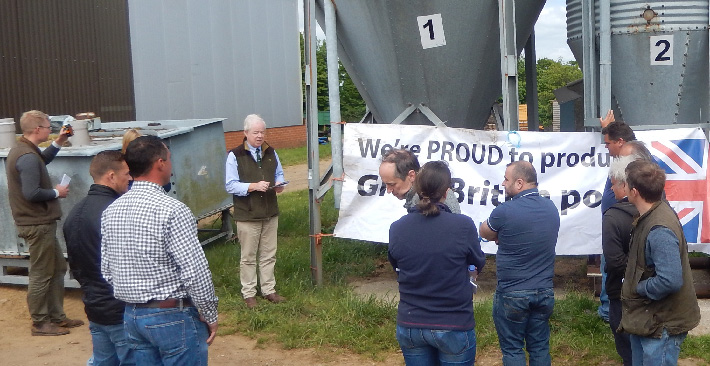News that in some cases imported pigmeat is now worth more than the UK product is a further indication of how the global shortage of pigs is starting to affect all sectors of the trade.For the first time for as long as I can remember (which is quite a while), EU pigmeat is now trading, in some cases, at similar or higher levels than its UK counterpart.
German producer prices, for example, are this week quoted at 1.66 euros/kg, which translates to an equivalent 140.8p/kg with the euro trading at its Friday afternoon value of 84.82p for conversion purposes. It’s worth bearing in mind that the German price generally relates to a heavier carcase with fewer below-the-line deductions, so in real terms, in many cases, German producers will be getting a higher net payment for their pigs than their UK counterparts.
Pig prices here have continued their upward climb, with the SPP rising by 1.11p to 131.39p, which is almost 20p/kg higher than its value in late March, but “two wrongs don’t make a right”.
Weekly contribution prices either stood on or went up about a penny this week, and still remain within a wide range between 131p and 141p. Spot pigs are still thin on the ground, trading at around the 140p mark with an extra copper or two available in places, but most pigs are on contract and there were very few one-off, out-of-the-blue spot loads available, reflecting the overall shortage of live pigs in the system.
The sow price benefitted from firmer EU values with rises of circa 3p on the week, which means that, in most cases, cull sow values are now at or above 80p/kg according to load size. This might tempt some producers to cull unproductive sows and replace them with gilts, although gilt prices have also followed the upward track of the SPP and it takes roughly 1.5 cull sows to buy one.
Weaner values are continuing to improve, with the latest AHDB 30kg ex-farm average rising to £44/head and 7kg piglets to £31.98, and weaner prices are expected to continue to improve while the SPP gains in value with spot trades in some areas reported to be £2 to £4 ahead of contract.
Grain futures prices have stayed at generally similar levels, although some of the longer months have gone up a pound or two, but Friday quotes on the LIFFE feed wheat market saw November traded at £127/t and March 2017 at £131.40/t.
Ex-farm new-crop feed wheat prices have moved a shade firmer, although quality remains an issue, with the latest UK ex-farm feed wheat off-the-combine average quoted at £112.35/t. The impact of currency movements for UK grain prices has benefitted the cereal sector to some extent, and the weakening of sterling against the euro and the dollar has slightly improved domestic prices rather than just being influenced by supply and demand.
However, on a wider basis, global grain production forecasts for 2016 / 17 are indicating record yields, with rains across the US corn belt favouring soya bean crops and the global feed market remains bearish on the whole, but currency movements will continue to influence the market.
And finally, more evidence is appearing of the reduction in the size of the UK pig herd, with publication of DEFRA’s June animal feed statistics indicating pig food production was down by 3.7% on an annual basis and the latest EU price evolution chart up to week 30 is almost nudging its 5 year average at this time last year, but it is well worth remembering for the ‘glass half empty’ brigade that there is a lot of ground to be made up from the dark days of tumbling pig prices in late 2015 / early 2016 before the industry can, on an overall basis, be considered truly ‘out of the woods’.




